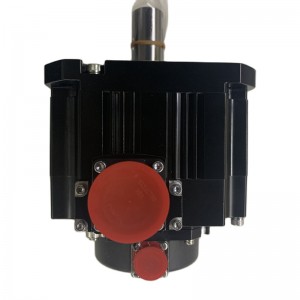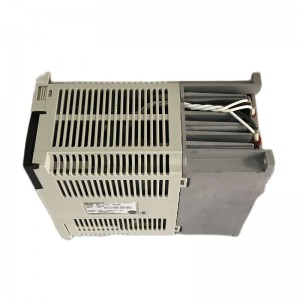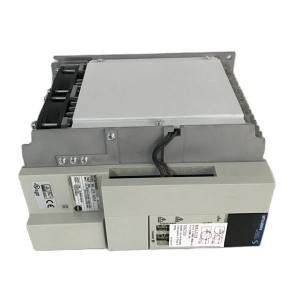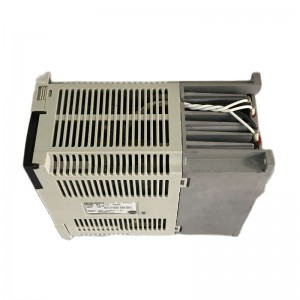We're one of the most professional FA One-stop suppliers in China.Our main products including servo motor, planetary gearbox, inverter and PLC, HMI.Brands including Panasonic, Mitsubishi, Yaskawa, Delta, TECO, Sanyo Denki ,Scheider, Siemens , Omron and etc.; Shipping time: Within 3-5 working days after getting the payment. Payment way: T/T, L/C, PayPal, West Union, Alipay, Wechat and so on
Spec Detail
Mitsubishi AC Servomotor
A type of servomotor that uses AC electrical input in order to produce mechanical output in the form of precise angular velocity is known as AC servo motor. AC servomotors are basically two-phase induction motors with certain exceptions in designing features.The output power achieved from ac servomotor ranges between some watt to a few hundred watts. While the operating frequency range is between 50 to 400 Hz. It provides closed-loop control to the feedback system as here the use of a type of encoder provides feedback regarding speed and position.
Construction of Mitsubishi AC Servo motor
We have already said in the beginning that an ac servomotor is regarded as a two-phase induction motor. However, ac servomotors have some special design features which are not present in normal induction motor, thus it is said that two somewhat differs in construction.
It is mainly include two major units, stator and rotor.
Stator: First have a look at the figure shown below, representing stator of ac servomotor:stator of ac servomotor
The stator of ac servo motor consists of two separate windings uniformly distributed and separated at 90°, in space. Out of the two windings, one is referred as main or fixed winding while the other one is called control winding.A constant ac signal as input is provided to the main winding of the stator. However, as the name suggests, the control winding is provided with the variable control voltage. This variable control voltage is obtained from the servo amplifier.t is to be noted here that to have a rotating magnetic field, the voltage applied to the control winding must be 90° out of phase w.r.t the input ac voltage.
Rotor: The rotor is generally of two types; one is squirrel cage type while the other is drag cup type.The squirrel cage type of rotor is shown below:squirrel cage rotorIn this type of rotor, the length is large while the diameter is small and is constructed with aluminium conductors thus weighs less.
It is to be noted here that the torque-speed characteristics of a normal induction motor have both positive as well as negative slope regions that represent unstable and stable regions, respectively.However, ac servo motors are designed to possess high stability thus, its torque-slip characteristics must not have a positive slip region. Along with this the torque developed in the motor must reduce in a linear manner with speed.
To achieve this the rotor circuit resistance should have a high value, with low inertia. Due to this reason, while constructing the rotor, the diameter to length ratio is kept smaller.The reduced air gaps between the aluminium bars in the squirrel cage motor facilitate a reduction in magnetizing current.
|
Item |
Specifications |
| Model | HF-KN73JK |
| Brand | Mitsubishi |
| Product name | AC servo motor |
| Type | HF-KN |
| Rate Speed(rpm) | 3000 |
| Maximum Speed (rpm) | 4500 |
| Brake | No |
| Rated Torque (Nm) | 2.4 |
| Maximum Torque (Nm) | 7.2 |
| Size | 80mm x 80mm x 133.9mm |
| Weight | 3.1kg |
| Power Supply (V) | 200 |
| Protection Class | IP65 |
-About J4 Mitsubishi Series :
To respond to an expanding range of applications including semiconductor and LCD manufacturing, robots, and food processing machines, MELSERVO-J4 combines with other Mitsubishi Electric product lines such as Motion controllers, networks, graphic operation terminals, programmable controllers and more. This gives you the freedom and flexibility to create a more advanced servo system.
-About J5 Mitsubishi Series :
(1)Progressiveness
For evolution of machines
Performance improvement
Program standardization
(2)Connectivity
For flexible system
Configurations
Integration with connectable devices
(3)Usability
For quick operation start
Tool enhancement
Improved drive system usability
(4)Maintainability
For prompt detection and
diagnosis of failures
Predictive/preventative maintenance
Corrective maintenance
(5)Heritage
For utilization of existing
(6)devices
Interchangeability with previous
(7)generation models
-About JET Mitsubishi Series
-About JE Mitsubishi Series
-About JN Mitsubishi Series














